Listen to This Article:
Great ingredients are the start of every amazing dish, whether that means the freshest local eggs for a simple plate of scrambled eggs or a more obscure ingredient that makes your menu item sing and leaves restaurant patrons wowed.
Usually, we try to balance the notion of “best” against our budget as we search for those great ingredients. But sometimes, a good splurge is in order. And the 10 items on this list? They represent some of the most expensive foods in the world. Read on to find out whether your next indulgence is here.
1. Kobe Beef
Kobe is a special type of beef that comes from Wagyu cattle. To qualify as Kobe, the cattle must be born, raised, and processed within Japan’s Hyogo Prefecture in western Japan—even more specifically, they must belong to the Tajima-gyu breed, a purebred Japanese Black cattle.
The cattle are fed a diet rich in grains which adds to their higher fat content and tender texture. The resulting meat must have both a high marbling rating and meat quality rating to get the Kobe designation. These standards are so strict that only 3,000 to 4,000 head of Kobe cattle come to market each year. Fewer than 1,000 of those are exported.
In the United States, Kobe beef can cost $25 to $50 per ounce—and more at restaurants. At COTE Miami, for example, a single ounce of Kobe beef will cost $76. With a protein this pricey, its preparation is best left to trained culinary professionals!
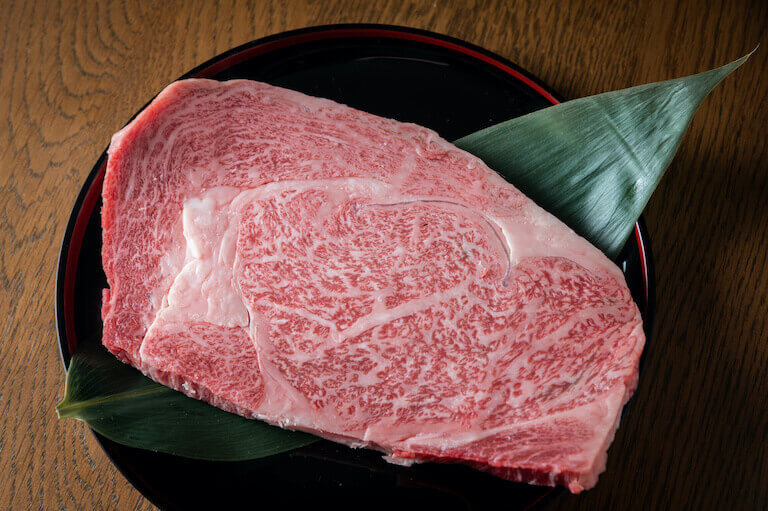
Kobe beef is distinctive for its abundant marbling, the white veins of fat that run through the meat.
2. White Truffles
White truffles are one of the most expensive types of truffles in the world. Truffles are the edible spores of a type of underground fungus. The white variety has a strong, earthy flavor with notes of oak and garlic. They are often shaved on top of a finished dish like pasta, risotto, or eggs.
Also known as Alba truffles, white truffles are primarily found in the Piedmont region of Italy, as well as in parts of Croatia and Slovenia. The truffle fungi require a special relationship with tree roots in order to grow. The fungi help the trees to gather water and minerals, and the tree feeds the truffle with sugars. Truffles also rely on forest creatures to eat them and spread their spores for propagation.
This special codependent relationship is very hard to recreate in a controlled environment, making truffles mostly foraged rather than cultivated. This is why they’re so rare—and therefore, so expensive. A single ounce of white truffles could go for more than $400.
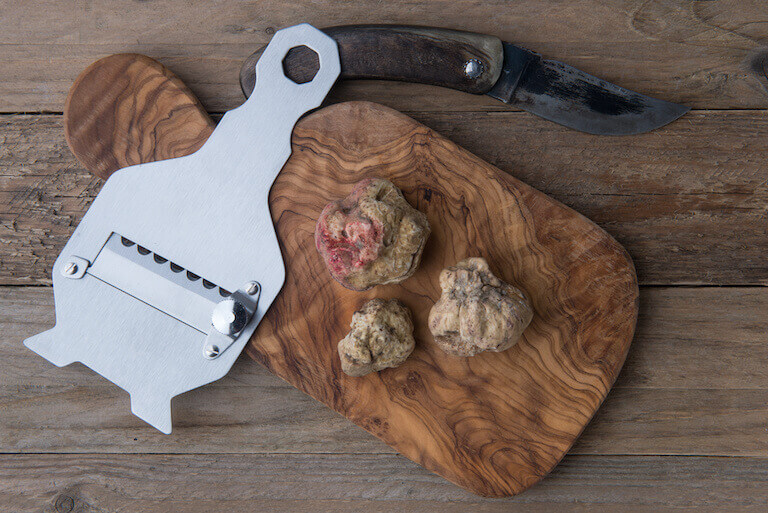
A special truffle shaver is used to sliver off thin slices of white truffle.
3. Beluga Caviar
Caviar is a luxury food that is made from the unfertilized roe, or eggs, of sturgeon fish. Caviar is usually served as an appetizer, typically on toast points or blinis, and is often accompanied by sour cream, chives, and lemon.
The most expensive type of caviar is beluga caviar, which comes from the beluga sturgeon. This large fish often weighs nearly 600 lbs, but the largest ever recorded weighed in at 3,463 lbs!
Because of the popularity of beluga caviar, the Freshwater Beluga sturgeon species was wildly overfished and became endangered. The United States, which imported 80 percent of the world’s supply, banned imports in 2005.
In 2020, a business in Florida received an exemption to sell beluga caviar; Mark Zaslavsky, owner of Sturgeon AquaFarms, had brought some of the sturgeon to the U.S. before the ban and raised them on his aquafarm. He now sells the caviar and has also donated fertilized sturgeon eggs to help repopulation efforts.
The item remains exorbitantly priced. An ounce of the American-farmed purebred beluga caviar costs about $770 for 28 grams (around an ounce) from their retail market. Plus shipping (you can get free shipping on order over $1,999).
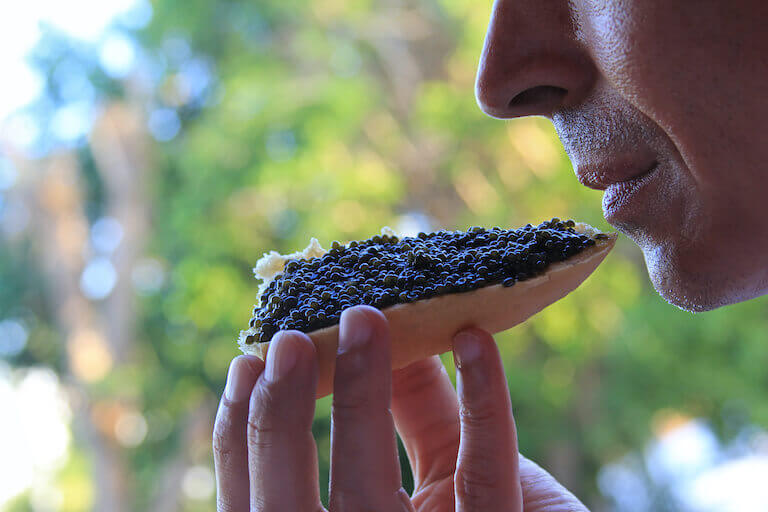
Topped with that much beluga caviar, that’s a very expensive piece of toast.
4. Saffron
Saffron is a spice made of the dried stigma of the saffron crocus flower. Its unique flavor and aroma are often described as floral, honey-like, and slightly bitter. It’s grown primarily in Iran and is a common ingredient in Iranian, Moroccan, and Indian dishes. You’ll find it in risotto, paella, and bouillabaisse recipes.
Saffron is the most expensive spice in the world by weight due to the labor-intensive process of harvesting the stigma. Each crocus flower only makes three strands of saffron, and they must be removed one at a time using tweezers.
Simple Saffron Rice Recipe
Saffron rice is a delicious yellow rice that makes for a delightful side dish.
Basic ingredients typically include:
- A pinch of saffron threads (or about a quarter teaspoon)
- 2 tablespoons of olive oil
- 2 cups of short-grain rice or basmati rice
- 3-4 cups of chicken stock or vegetable stock
- 1 medium yellow or Spanish onion, chopped or minced
Different recipes call for different approaches. Some will have you crush the saffron, then add about a quarter cup of hot water and let the saffron soak to release the flavor before sauteeing the onions and cooking the rice; then you add the saffron mixture to the rice, the stock, bring to a boil, reduce heat, and cook for 20-30 minutes. Other recipes don’t call for crushing but will say to add the saffron threads and other spices to the liquid and rice mixture.
While it’s very expensive per gram, a little saffron goes a long way. An education in the culinary arts from Auguste Escoffier School of Culinary Arts may help cooks and chefs develop their palates so they’re not overusing pricy spices like saffron.*
*Information may not reflect every student’s experience. Results and outcomes may be based on several factors, such as geographical region or previous experience.
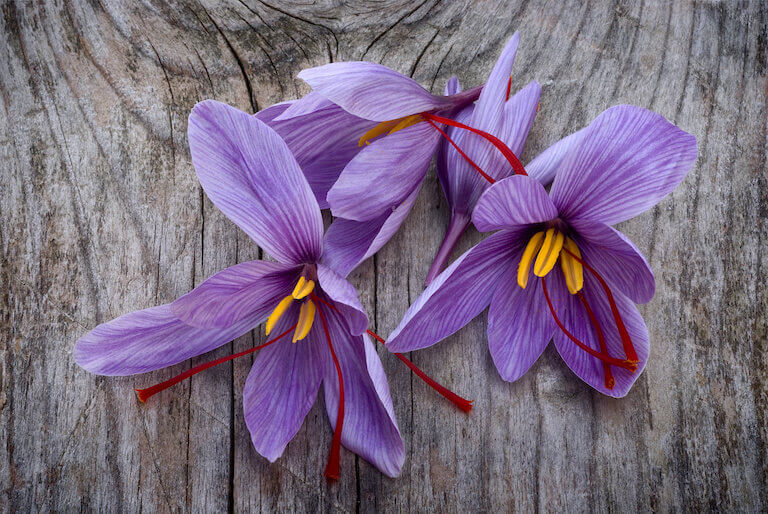
Each saffron crocus flower only has three tiny strands of saffron.
5. Matsutake Mushrooms
Matsutake mushrooms are highly prized in Japanese cuisine and are one of the most expensive types of mushrooms in the world. They have a strong, earthy aroma and a firm, meaty texture.
They are harvested in the fall and can be eaten raw or cooked in a variety of dishes, such as soups, stews, and rice dishes.
These large mushrooms are native to Japan, but some species can also be found in parts of China, Korea, and the Pacific Northwest region of the United States. Like truffles, they cannot be reliably grown. Instead, they are foraged from among the roots of red pine trees.
Fresh matsutake mushrooms are usually available from about September into November in the U.S.; their price varies widely, from about $40 per pound in the United States to as much as $1,000 per pound in Japan. The price disparity owes in part to the different species—the type found in the U.S. are related but not technically considered traditional matsutake mushrooms—as well as a shortage in Japan, where environmental stressors and pine wilt disease have impacted their production.
A mushroom this rare should be the focus of the dish. In Escoffier’s plant-based culinary arts programs, students can explore how to make vegetables, fruits, and grains the star of the show.*
*Information may not reflect every student’s experience. Results and outcomes may be based on several factors, such as geographical region or previous experience.
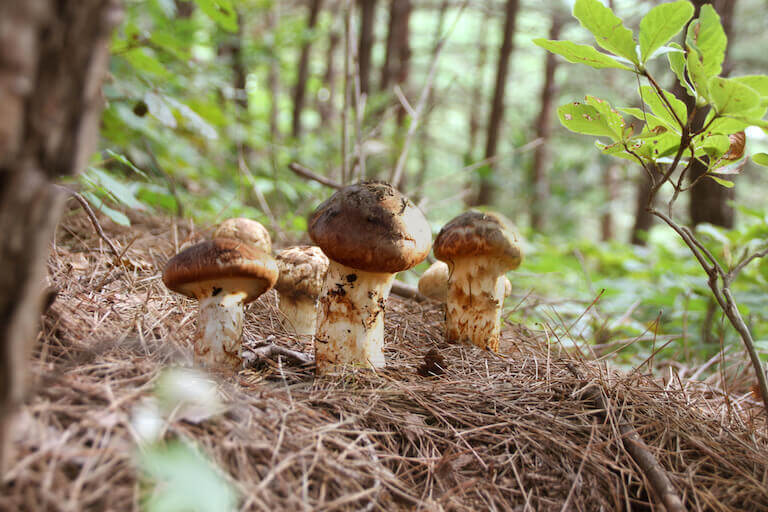
Matsutake mushrooms primarily grow among the roots of red pine trees in Japan.
How Supply Chain Disruptions Affect Price
Like any other commodity, luxury food items can be impacted by supply chain disruptions that result in even higher prices.
In 2017, for example, a hurricane in Madagascar wiped out nearly 30 percent of the country’s vanilla crop. Because Madagascar produced about 80 percent of the world’s vanilla at the time, the repercussions were enormous—the price of vanilla bean pods spiked to a record $600 per kilogram.
The same thing can happen with Beluga caviar when overfishing threatens a species, or to mushrooms when a roundworm decimates the already-scarce fungi.
6. Kopi Luwak Coffee
Kopi luwak coffee is considered the most expensive coffee in the world, likely because of how it’s harvested: it’s made from coffee beans that have been eaten and excreted by Asian palm civets, a type of wild cat-like animal native to Indonesia. Yes, a coffee derived from mammal poop is a prized delicacy.
The beans are fermented and partially broken down inside the civet’s digestive tract before they are harvested from the feces of the civet, washed thoroughly, and roasted. The coffee is said to have a rich, smooth flavor with hints of chocolate and caramel.
A pound of these beans—when harvested in the wild—can go for $600. And a cup could run you $100, making it the most expensive in the world.
There are concerns about this popular coffee having a detrimental effect on the civet population. Some people capture civets and keep them in poor conditions to mass-produce the beans. As naturally solitary animals, civets don’t thrive on farms. So make sure to only get yours from ethical sources!
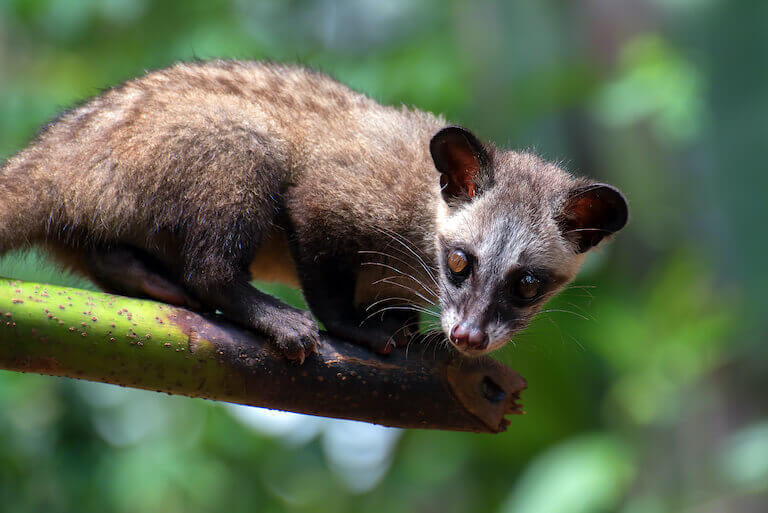
This civet makes some very good coffee.
7. Iberico Ham
Iberico ham, also known as Jamón Ibérico, is a cured ham that is produced in Spain and Portugal. It has a complex, nutty flavor with hints of acorns, herbs, and spices. It’s served in thin slices and eaten on its own, so the flavor can shine through.
This meat is made from the Iberian pig, a breed that is known for its unique flavor and texture. These pigs are allowed to roam freely, where they get plump on an acorn-heavy diet. After processing, the meat is salted, dried, and aged for up to three years.
Due to the time involved in making it, Iberico ham can be quite pricey. A single leg (13 to 17 lbs) can cost between $500 and $4,500.
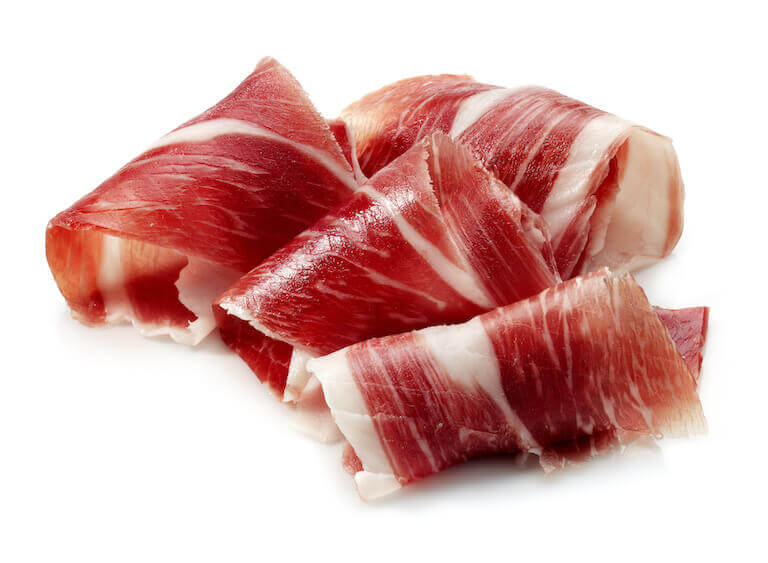
Iberico ham is thinly sliced and ready to eat.
8. Densuke Watermelon
Densuke watermelon, also known as black watermelon, is a rare and unique melon that is only grown on the island of Hokkaido in northern Japan; just like true champagne only comes from a certain region in France, the Densuke watermelon is only considered legitimate if it comes from Hokkaido. You can buy seeds and grow your own, but that’s not the same.
The Densuke watermelon is known for its distinct black rind, crisp red flesh, and exceptional sweetness. Their flavor is often described as having a hint of strawberry or honeydew melon. These melons are grown in the volcanic soil of Hokkaido, which is rich in minerals and nutrients. They require a cool climate and plenty of water to thrive. Densuke watermelons are hand-picked when fully ripe, then washed and packaged for shipment.
Only 10,000 are grown each year, which accounts for their exceptional price. They then go to auction; their starting price is around $250, but one jumbo black watermelon sold at a record price of $6,100 in 2008.
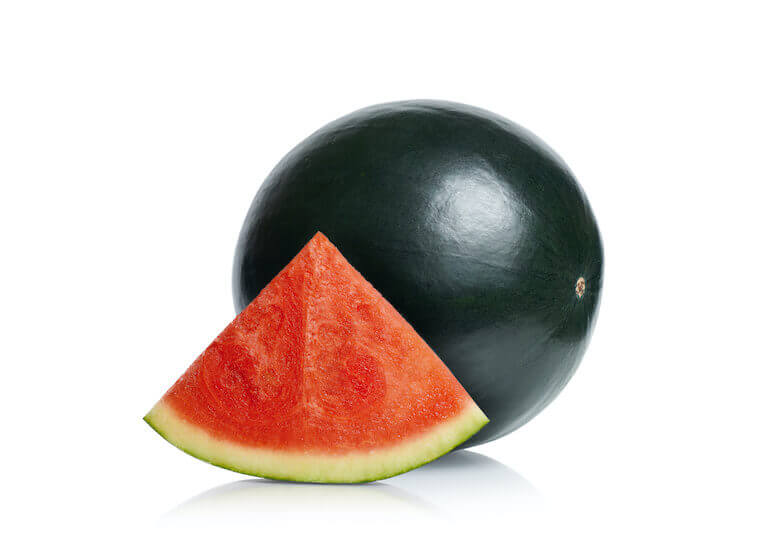
Densuke watermelons have very dark, nearly black rinds and have very few seeds.
9. Bluefin Tuna
Bluefin tuna is highly prized in Japan, where it is a staple of sushi and sashimi. It has a rich, buttery flavor and tender texture. It’s also popular in other countries, particularly among seafood enthusiasts and high-end restaurants. This popularity has led to overfishing in the Atlantic, Pacific, and Indian Oceans, and it is now an endangered species. But fishing restrictions have helped the species to begin recovering over the past decade.
Due to its popularity and fishing restrictions, bluefin tuna is pricey. A 212 kg bluefin tuna sold for $273,000 at auction in Tokyo in January 2023. That breaks down to $1,287 per kilo! A two-pound bluefin tuna steak retails for about $104, plus shipping.
At Escoffier, culinary arts students may explore the topic of sustainability and responsible food sourcing. With this education and supplemental experience, graduates may be better prepared to look for delicious alternatives to ingredients like bluefin tuna.*
*Information may not reflect every student’s experience. Results and outcomes may be based on several factors, such as geographical region or previous experience.
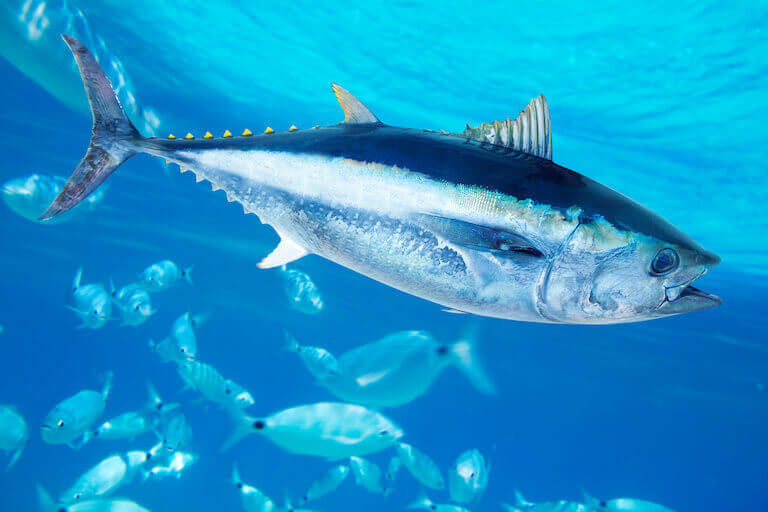
Bluefin tuna are delicious, but smaller and more abundant species may be better choices for sustainability.
10. Ruby Roman Grapes
Ruby Roman grapes are a rare and exclusive variety of grapes that are only grown in Japan. These round, plump grapes have a deep red color and thick skin. They are known for their large size, with individual grapes often weighing up to 20 grams each.
Ruby Roman grapes are very sweet, with a rich, fruity flavor that is often compared to that of wine grapes. They are exclusively grown in the Ishikawa Prefecture of Japan, on the west coast of Honshu island. They are carefully tended by farmers who limit the number of grapes per vine to ensure the highest quality. Ruby Roman grapes are hand-picked when fully ripe, then carefully packed and shipped to markets in Japan and around the world.
These grapes are priced by category, with “superior” bunches going for $90 to $140, and “special superior” bunches costing between $180 and $450. The rarest of all, the “premium” Ruby Roman grapes can go for $1,000 per bunch.
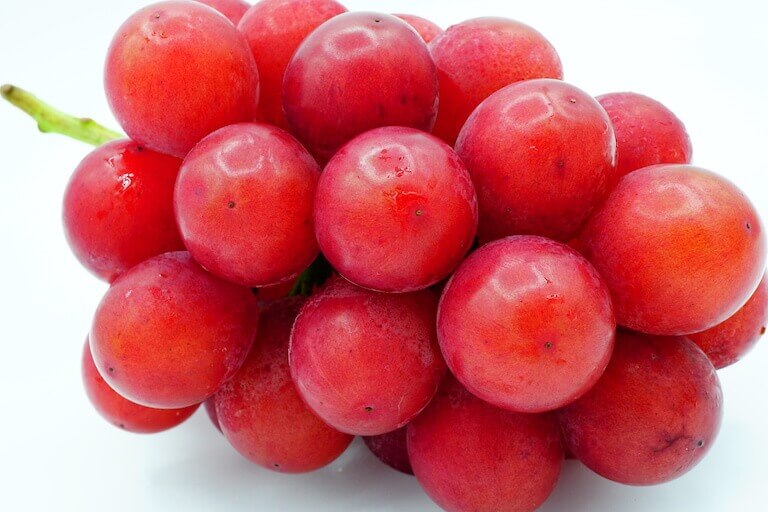
Going for $90 to $1,000, these are grapes to be savored!
Expensive Ingredients Require an Experienced Chef
Many of these pricey ingredients are not pantry staples, except perhaps saffron and truffles. The rest could be one-time indulgences for foodies who value the experience of trying something new—whatever the cost.
With ingredients this expensive, they’re not the domain of the amateur cook. Rather, it takes education and experience to tackle these premium products! The road to this kind of ingredient expertise could start with culinary school.
Start by building a foundation at Escoffier, so you can eventually be ready to prepare Kobe beef and matsutake mushrooms. Contact us today to learn more about curriculum and enrollment.
TO LEARN MORE ABOUT SPECIAL INGREDIENTS AND WORLD CUISINES, TRY THESE ARTICLES NEXT:
- Cajun vs. Creole: What’s the Difference?
- American Regional Cuisine: The Best Dishes from Around the Country
- Is Eating a Plant-Based Diet Healthy?
*Information may not reflect every student’s experience. Results and outcomes may be based on several factors, such as geographical region or previous experience.
This article was originally published on June 9, 2023 and has since been updated.

